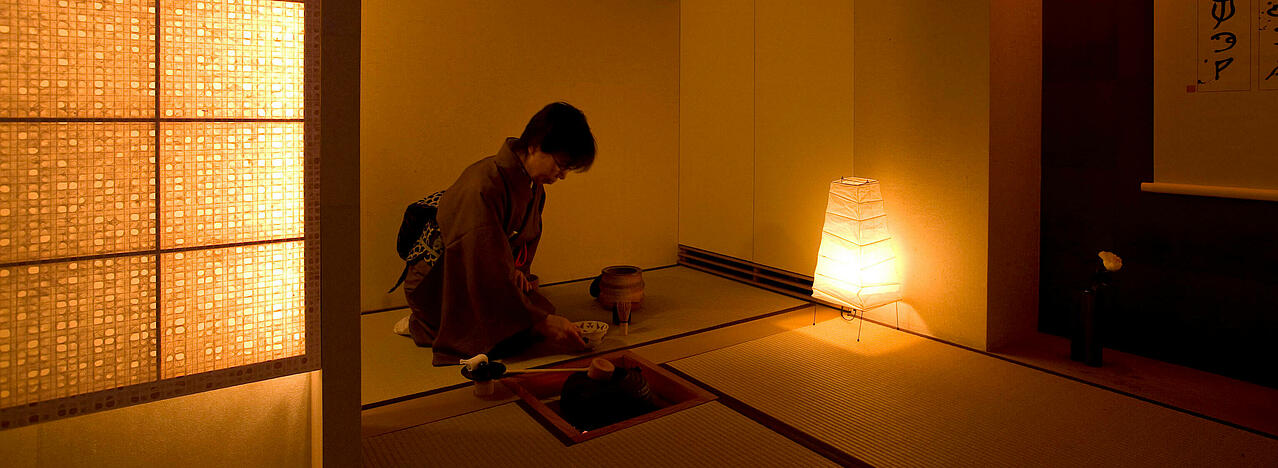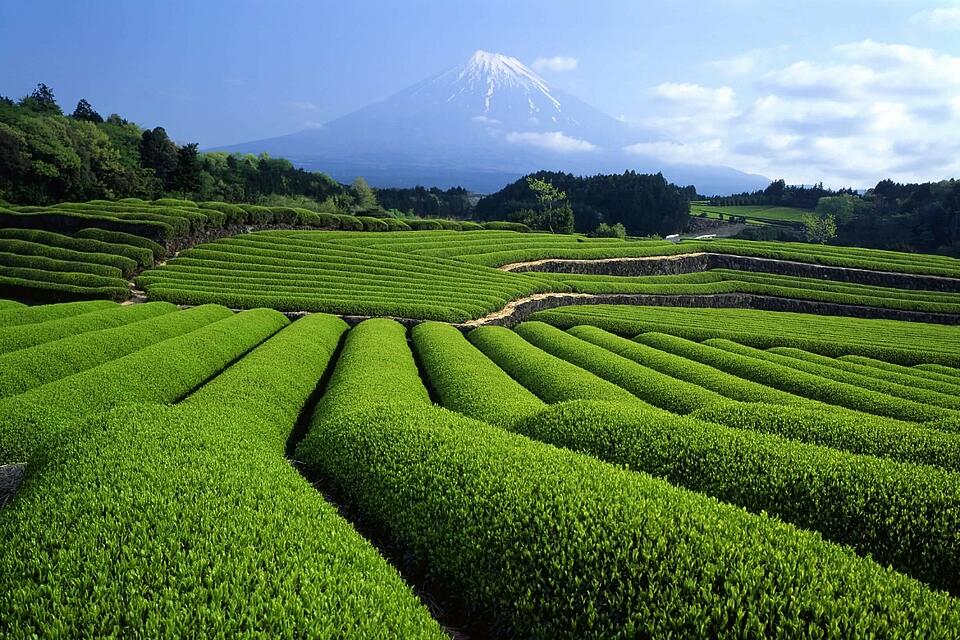
Hiroshi Ichikawa/shutterstock
Japan | Leaf Tea
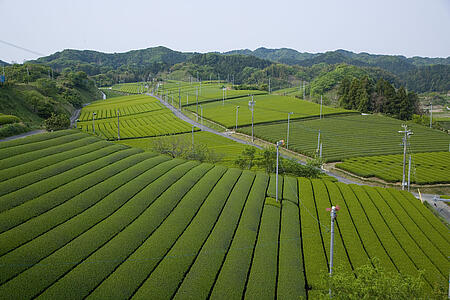
A special feature of Japanese tea production is the separation of labour into cultivation and processing of the leaves. The tea farmers cultivate the fresh tea leaves. In a first production step the tea leaves are processed into raw tea, the so-called Aracha. The tea fields in Japan can be easily recognized by the perfect, linear tea rows. The ventilators above the tea fields provide air supply from warmer layers, so to prevent the frost from setting on the leaves during cold nights.
Specialized manufacturing companies, like our Japanese partner Maruyama Tea Corporation in Shizuoka, continue the processing of the Aracha. It is sorted by a very elaborate mechanical process and then composed by Tea Tasters.
The Pleasure of making tea
Temperature & Brewing time
Temperature and infusion time have a significant influence on the taste and aroma of the infusion. By changing the infusion temperature and infusion time, the ingredients dissolved on the dry leaf, such as tannins, amino acids, and secondary plant substances, also change. This can also be recognized by the darker and cloudier colour of a hot and long infusion.
Therefore, a lower brewing temperature and a short infusion time are recommended for the sensitive and delicate notes of Japanese green teas. If you let the Japanese tea steep for more than 5 minutes, you will not find any pleasure in the cup, because the tea will only taste bitter. Most teas from Japan should be steeped between 1-3 minutes. With the right preparation, Japanese tea does not taste bitter. The water should always be boiled first and then cooled down to the desired temperature. Authentic Japanese tea is made with the Yuzamashi cooling pot.
Dosage & Multiple Infusions
To enjoy tea in an authentic Japanese style, pour the tea into the pot in larger doses than usual and pour it several times. From the Japanese point of view, it is a waste of high-quality tea to infuse it only once. It brings a lot of joy to try this and to taste the different facets of a tea – we share this view and recommend you to infuse our high-quality Japanese green teas several times.
The perfect balance of quantity, infusion time and temperature is crucial to achieve a convincing taste with every infusion. Generally, as a rule of thumb: Each time you make an infusion, increase the temperature, and reduce the infusion time.
Kyusu
The Japanese one-hand jugs Kyusu are particularly practical for multiple infusions. Unlike the preparation of herbal blends and fruit melanges in large pots and the one-time infusion of these creations, Japanese tea is prepared in a small pot, the so-called Kyusu. Thanks to the integrated sieve, the tea can be poured directly into the Kyusu. In the Kyusu the tea leaf can move freely, and the perfect aroma unfolds. After the infusion time, the tea is poured completely into small bowls. You can repeat this process - the number of infusions depends on your experimental spirit and taste!
The higher the quality of the tea, the smaller the Kyusu.
Have a look at our kyusu and more japanese accessoires.
Water Quality
The higher the quality of the green tea, the more value should be placed on soft water. Use a water filter or, for particularly high quality, still mineral water.
Storage
To preserve the freshness and ingredients of our Japanese green teas for a long time after opening the vacuum bags, we recommend sealing the bags airtight and to store them in a cool place. The opened bags should be consumed as soon as possible.
Special preparations
Preparation of Japanese Teas as Cold Brew „Mizudashi Cha“
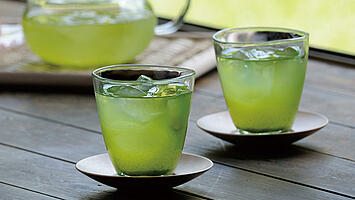
Pour cold water over the tea leaf. After 1-2 hours the cold brew tea is ready-to-drink and should be consumed within one day. The cold brew has a sweetish aroma and no bitter notes. The bright green colour and the fresh taste are energizing and refreshing.
- Cold infusion: 15 g tea – 1.3 l cold water – 1-2 h infusion time
„Perfect for a warm summer day.“
Recommended tea variety: Japan Fukamushicha Urara organic tea (item # 00640)
Preparation of Japanese Tea – Houjicha
Fill the Houjicha into a pot and add boiling water. After a very short infusion time of 30 seconds, the tea is almost ready and shows a bright amber colour. In Japan, the tea is often drunk with meals and in the evening.
- Houjicha infusion: 3-4 tea spoons – 350 ml – 100 °C – 30 seconds
Although it has a brown leaf, Houjicha is a green tea. Houjicha distinguishes itself from other green teas by being gently roasted at 300-350 °C for about 1 minute after the traditional production of the green tea leaf. The Japanese classify Houjicha varieties by the intensity of the roasting. The Japan Houjicha Sumire (Item #00634) is medium roasted and particularly popular in Europe due to its excellent balance of tender-nutty and intensive roasted character.
Preparation of Japanese green teas as hot brews with multiple infusions
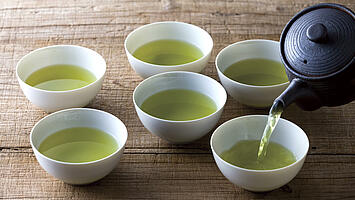
Recommendation for Japan Kabusecha Akari organic tea (Item #00641).
Put about 2-3 tea spoons of the loose tea leaves into a small Kyusu, the optimal volume is 100 ml. Pour the boiling hot water into a Yuzamashi (Item #59020) to let the water cool down.
- 1st infusion: 70 °C - 2 minutes
- 2nd infusion: 80 °C - 1 minute
- 3rd infusion: 90 °C - 45 seconds
Depending on your experimental spirit and taste, further infusions may follow.
Since the quality of the water has a great influence on the taste of the infusion, the above preparation of the infusions should only serve as a guideline. Try for yourself with your own water and tea equipment what brings the highest taste enjoyment.
Tea is nought but this: first you heat the water, then you make the tea. Then you drink it properly. That is all you need to know.
